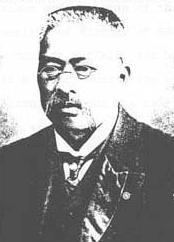Occupation Educator Name Takamine Hideo | Role Educator | |
 | ||
Education State University of New York at Oswego Similar People Cheoljong of Joseon, Sunjong of Korea, Sunjo of Joseon, Deposed Queen Lady Yun, Jungjong of Joseon | ||
Takamine Hideo (高嶺 秀夫, October 5, 1854 – February 22, 1910) was an administrator and educator in Meiji period Japan.
Contents
Early life
Takamine was born to a samurai family in Aizuwakamatsu domain (present day Fukushima Prefecture) in 1854. After completing his studies in the feudal domain's school, Nisshinkan, he became a page to the daimyō Matsudaira Katamori from April 1868 to the surrender of the domain to imperial forces in the Boshin War in November that same year.
He was sentenced to confinement for a time in Tokyo, and was placed in the care of the Matsudaira clan of the Tanba-Kameyama Domain. As part of his studies, he entered the private school of Numa Morikazu, where he began to learn English. He soon attended Keiō-gijuku (A private school founded by Fukuzawa Yukichi, which grew into the modern-day Keio University) and received a scholarship to attend Oswego Normal School (present day SUNY Oswego), in New York in the United States from 1875–1878. He was fortunate to attend Oswego during the very height of its fame as a progressive and innovative institution for teacher education. Takamine interacted with Edward Austin Sheldon (the director of the school) and lived in the house of famed educator Johann Heinrich Hermann Krüsi (1817–1903).
During his time in the United States he also attended Anderson School of Natural History on Penikese Island during the summer of 1877 and spent one semester studying under Burt Wilder, a famous zoologist at Cornell University. He was the first Japanese (some believe to be the first Asian) to have a teaching credential.
Later career
After returning to Japan, Takamine worked as an assistant to American scientist Edward Sylvester Morse and accompanied him on a trek to the rugged areas of Hokkaidō which were occupied by the Ainu.
He eventually became the Vice Principal and Principal of the Tokyo Normal School/ Tokyo Higher Normal School (same school but the name was changed), Principal of the Tokyo Art School, and Tokyo Music School. He was also deeply involved in women's education and became the Principal of Tokyo Women's Higher Normal School.
Generally, he is remembered as the man who introduced Pestallozian teaching methods and philosophy to Japan due to his translation of James Johonnot's Principles and Practice of Teaching into Japanese as Kyoiku Shinron [the new theory of education] 1885. Other projects he focused on included Japan's Exhibit in the Columbian Exposition of 1893 and he was involved in the Japan–British Exhibition (1910). His legacy is mixed, as despite his attempts to implement the American model of education in Japan, in the end, the government adopted the more conservative, German model.
Takamine's son, Takamine Toshio (1885–1959), was a famous physicist who worked in the field of spectroscopy.
